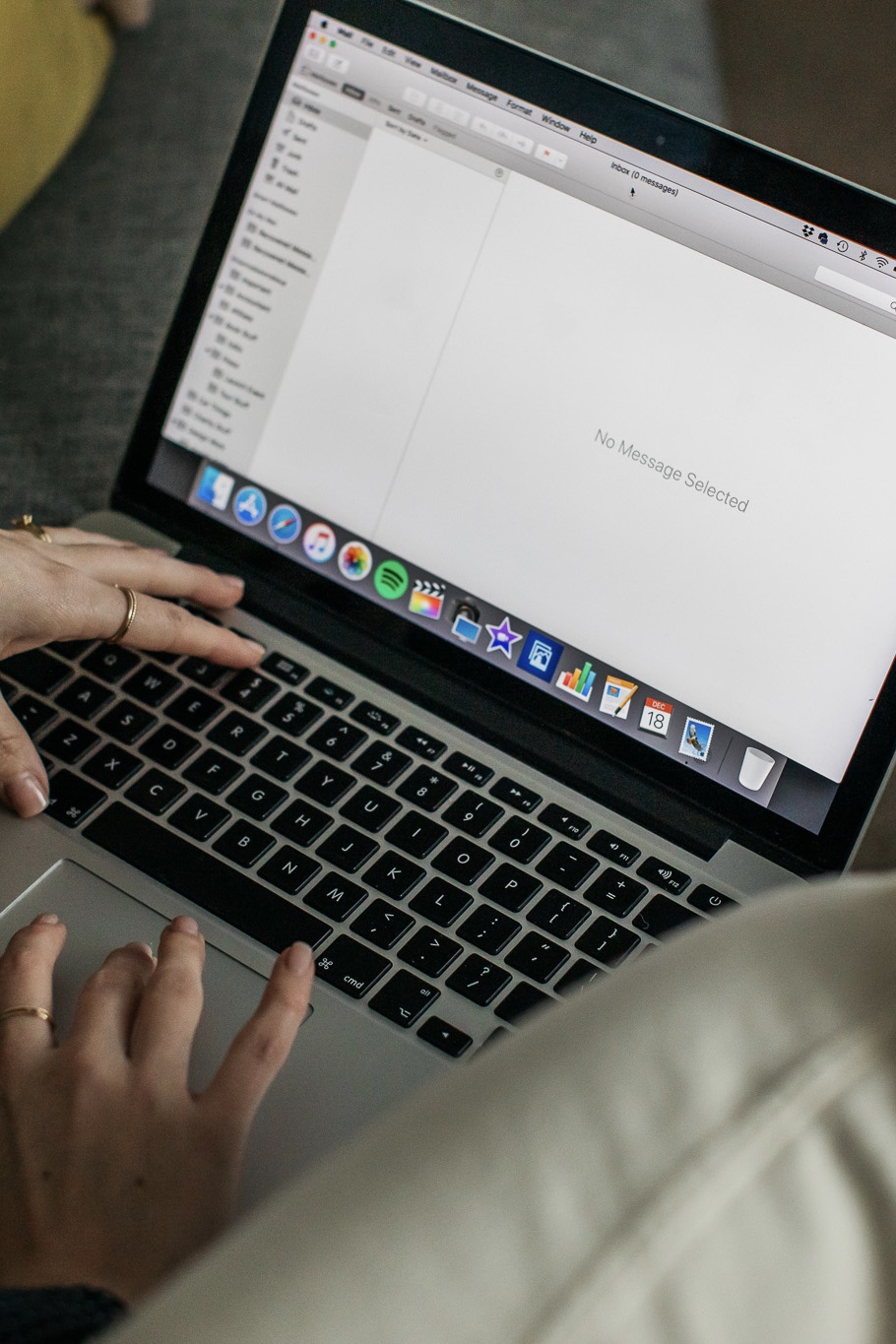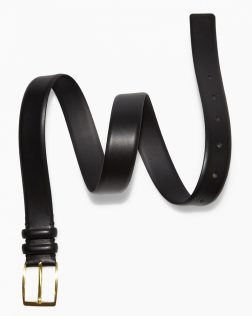‘No Messages Selected’

*This post contains affiliate links (denoted by a ‘*’)
Ultimately deep down – or perhaps even not that deep – I’m a nerd. I love analytics, statistics and noticing trends and patterns. So for me one of the best parts of meeting you guys, aside from just generally being in your lovely presence, your kind words and good hugs; is discovering the most frequently asked questions from the audience Q&A part of my book events. It almost acts as one gigantic focus-group which is something that I’ve wanted to do for years, so thank you for unwittingly taking part in that. Paperwork comes up often (which was actually one of the few parts of ‘An Edited Life‘ that we cut – blog post of that excerpt coming soon!), along with the topic of just generally feeling overwhelmed and not knowing where to start (I can cover that soon too if you fancy), and there is always, ALWAYS a question about Mark which always put a smile on my face as I could quite happily sit on stage and sing Mark’s praises till the organisers are tapping their watches at the back and the stage clearing Oscar-speech music chimes in.
Another FAQ is regarding emails. Oh I tackle all the sexy topics here, don’t I? If the moderator of the session doesn’t it bring it up during our chat, then it’s often asked by an audience member at some point and I think ultimately, it’s because a lot of us pin our a big proportion of our work-related stresses on them. I know I do. The more emails I have in my inbox that remain unanswered, the more stressed I feel – it’s a direct and unwavering correlation. So what can we do to manage this? And how can we edge ourselves even closer to the inbox nirvana of ‘No Messages Selected‘? Featuring some tips taken straight from the pages of AEL (and some updated tips too!), here’s what I’d suggest…


WHAT TO DO IF… You have thousands of unread and un-filed emails: Delete all. There’s only one thing to do here and that is to select all and press the delete button. You need a fresh start, a fresh slate and a zero emails in your inbox. If you’re wary of deleting something that you shouldn’t, then spend the next week or month flagging emails that you refer back to often, that are useful to you in your working or home life and then save these from the cull and slot them into categories that make sense to you – TA-DAH – you already have a framework to use going forward. Easy peasy. Next time an email comes in, either reply to it ASAP to bat it out of your immediate inbox, leave it there if it’s something you need to action and file it away when you have completed whatever that is, or delete it. No looking back.
WHAT TO DO IF… You’re finding your emails a constant distraction: Set to push. I’d recommend doing this step whatever route you decide to take with your inbox, but by setting your emails to fetch whenever you open the app, instead of retrieving messages all day long, will help to compartmentalise the task. I set my mobile to battery-saving mode during the week and that means that I need to refresh my inbox manually whenever I open the app in order to see what’s new in there. Then on my desktop I keep the app closed and only open it when I actually have time to deal with whatever I might find. Just the fact that you don’t have a red number on your homepage steadily increasing by the hour, and notifications popping up at the side of the screen when you’re in the flow of another task, make emails seem a whole lot easier to deal with. It’s simple, but effective.
WHAT TO DO IF… You feel like your inbox is becoming overwhelming: Use the ‘Three Times a Day’ rule. Once you’ve set your inbox to only retrieve messages when you tell it to, you can go one step further and set yourself a timetable of when in your day it’s best to do that. If you’re working well on your own schedule, then plough on, but if you feel like you’re still checking it multiple times a day and find yourself looking at a heap of unanswered emails, then it’s time to edit in an extra level of organisation. In this case I’d recommend the ‘three times a day’ rule. You check your inbox once in the morning and reply to anything that has come in the previous evening or overnight, then once around lunchtime to do a tidy-up of any urgent morning messages, then do one final check just before you clock off for the day to reply to whatever is left. This is how I personally like to approach my inbox. By checking it three times a day I’m able to keep on top of it, and I don’t feel like it ever gets too overwhelming. Short and sharp bursts work better for me, plus I’m able to catch anything in the net that’s urgent in a timely fashion. It’s about finding those slots of time for you, where you feel like tackling your inbox won’t soak up any super-focused juice that could be better used on other tasks. You want to make your check-ins as short and sweet as possible and at times that don’t eat into times when you’re getting into really meaty to-do list items.




WHAT TO DO IF… You feel like you’re spending your entire day replying to emails: Have a designated reply time. More and more I receive automatically generated responses to emails I send, from recipients who have a designated reply time for their emails. Some only answer emails on a Monday, Wednesday and Friday. Or just twice a week? Or even at 9am every morning? Whatever their designated reply time rules are, they put it in their email signatures and have an automatic reply – a bit like an out-of-office – that lets people in on this and so they know when to expect a reply. Often there will also be a number to call if you need to find something out more urgently. I think this is a win-win for everyone. Those who set these sorts of rules for themselves do so in order to ease the stress of dealing with their inboxes and to free up more time for other endeavours; and those on the receiving end are kept in the loop and so won’t get angsty when a reply takes longer than expected. If you feel like this is something that could work for you and your role, just remember to set up your inbox so an automatic message that details your email strategy goes out to all who email you. A simple: ‘Just a quick note, to keep productivity at a maximum I only check emails on a Monday, Wednesday and Friday, so please bear with me. Your business is very important to me and I will get back to you as soon as I can’ is a good template to use.
WHAT TO DO IF… If it’s just not feasible for you to get your inbox down to zero before the end of the working day: Set yourself your own goal. A lot of us use our inbox as a to-do list of sorts; keeping emails in there until they have been actioned, or followed-up or the piece of work that you’re prepping sent over. That’s how I use it too. Nothing gets filed away until I’ve done whatever those emails required me to do. So actually getting my inbox to zero every evening before I clock off is something that is completely achievable for me some days, but a complete pipe dream on others. And that’s ok. Although zero emails awaiting our replying is the dream, it’s not a failure if it’s not always our reality. So I’d suggest having a number by which you use as a measuring stick for how out of control your inbox is. This number will be different for everyone. For example my lovely managers – Lucy and Millie – set their bar at around the 30 mark. That number for them feels manageable and as close to zero as they’ll ever get, given the demands of the job (looking after a Mariah Carey diva like me takes up a lot of their time as you can imagine). For me I set it around 10-ish. That’s a number that I can easily tend to and get as close to zero as I possible can in an hour or so, depending on what’s being asked of me and it never feels like I’m completely ignoring it or leaving emails answered. Experiment, find your number and make that your goal.
Photos by Emma Croman
‘An Edited Life’ is now available to purchase worldwide HERE














Comments